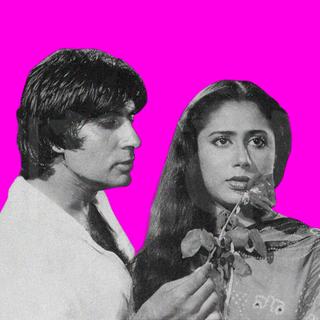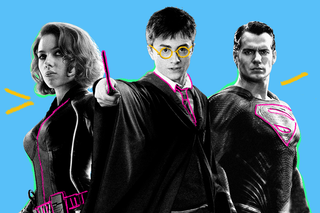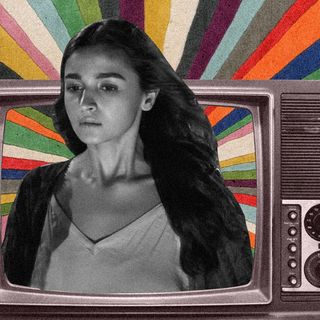
Franchise Filmmaking Is Taking Over the Cinematic Medium — But at What Cost?
The franchise model keeps getting stronger — and this could arguably ruin cinema as a form of art and expression.

Last Thursday, David Zaslav, CEO and President of Warner Bros. Discovery (WBD), said his company plans to “focus on franchises.” “We haven’t had a Superman movie in 13 years. We haven’t done a Harry Potter in 15 years. The DC movies and the Harry Potter movies provided a lot of the profits for Warner Bros. … over the past 25 years,” Zaslav said in a meeting, according to The Hollywood Reporter. He also mentioned that the studio is open to exploring making a new Harry Potter film if the controversial series author, J. K. Rowling, were to come on board. Zaslav’s comments highlight how with the franchise model, studios have recognized finances and profits as a bigger priority than filmmaking itself. And this could have larger repercussions on cinema as a form of art and expression.
One of the highest-grossing movies of this year was Tom Cruise’s Top Gun: Maverick. Zack Snyder’s Justice League and Spider-man: No Way Home were two of the most anticipated and talked about films the previous year. Though franchises have been a Hollywood mainstay for several decades now, MCU has arguably had a role to play in turning franchises into the dominant model of filmmaking in Hollywood. And Disney — the company that owns Marvel — is building up not just the MCU but also other its other film franchises such as Star Wars and Indiana Jones. But a look at the business model of franchises shows under capitalism, how stories are commodified into saleable products — leading to storytelling itself becoming leveraged for profit rather than art.
In recent months, VFX artists complained that working conditions at Marvel were harming them. As arguably the biggest contributors to the MCU’s visual exuberance, VFX artists remain constrained with little time, money, and creative energy due to Marvel’s factory-model of filmmaking. Occasional instances of noted filmmakers being signed and then asked to leave due to creative differences with the company also point to this shift in approach to filmmaking. As The Swaddle noted earlier: “Marvel is a result of what happens when capitalism meets cinema: it is palatable, repetitive, safe, and never subversive or risky the way art is sometimes called upon to be… in the bid to stay at the zenith of the cultural moment, the studio churns out more while also offering less.”
Related on The Swaddle:
Why Martin Scorsese’s Criticism of the Marvel Franchise Continues to Be Relevant
The other key aspect of franchise filmmaking is nostalgia and recall-value. Take last year’s Spider-man: No Way Home for instance. The film rode into massive box-office success solely on the back of cameos and references from the previous sets of Spider-man movies. Critics noted that the plot of the film had many loopholes and issues, and seemed contrived to meet the requirements of a deal between Disney and Sony. However, despite having such a weak story, fans loved the film simply because it was Spider-man. Many critics, too, largely overlooked all the glaring shortcomings of the movie in favor of nostalgia.
There’s a chicken-and-egg problem to contend with: have studios created the demand, or is it audience demand that compels studios? Some evidence points to the former. Beyond affecting filmmaking as a craft, franchise movies also create troubles for independent releases. Vince Mancini, a senior film and culture writer at Uproxx, wrote in 2018, “Last year (i.e., 2017), you had to go all the way down to number 13 on the North American box office chart to find a non-sequel, non-franchise, non-remake movie on the list of the year’s top-grossing movies. In terms of all-time box office, only two out of the top 10 and three out of the top 20 fall into that category.”
This is partly achieved by the sheer ability of a big-budget blockbuster to buy more screens, effectively leaving smaller independent movies and at times even medium-budget projects hanging. Earlier this year, Disney reportedly blocked virtually every screen in several theaters to screen Doctor Strange: Multiverse of Madness. Mancini expands on this phenomenon, explaining, “the truth is they (movie studios) just don’t seem to need them (new ideas) that much. They certainly don’t invest in them. The business has shifted, to brands, and franchises, and the degree to which it has done so would shock just about anyone who doesn’t cover the business for a living.”
This is how franchises remain money-minting machines for media corporations even when there may not be any active or quick upcoming projects featuring them. Through merchandising, and licensing intellectual property to a select few other corporations, studios have convinced consumers of their media to not only pay to watch their films but also to own memorabilia and other products related to those movies. And consumers are encouraged to buy only products which carry an official stamp of the company on it in order to legitimize themselves as a real fan. As one article on the world of Star Wars merchandising notes, “The hunger for products continued through a long dry spell without new films. The original product line continued expanding, which in turn financed digitization and revision of the first three films for re-release in the 1990s.”
Similarly, the Harry Potter franchise that Zaslav so keenly wants to revive turns up annual revenue of more than $26 million through just its themed stores across the United Kingdom. Toys and other official merchandise have earned the franchise $7.3 Billion — almost the same amount as the collective worldwide gross of all eight movies in the series. These stores and toys have ensured that long after the original series of movies left the theatres, audiences remember the character and the lore — laying the groundwork for potential reboots or spin-offs. Merchandising today can potentially be the more profitable — hence the one with great priority — industry than filmmaking itself.
The success of No Way Home resulted in Disney and Sony reopening negotiations to explore a new deal for Spider-man — who in the movie’s universe is erased from all memories — to continue featuring in the MCU, which will perhaps force writers to come up with an even more contrived plot to explain how the character is suddenly remembered again. But if the success of No Way Home is any indication, that bit of explanation really need not matter as long as enough cameos and callbacks are a part of the movie. Franchise filmmaking, then, can be said to have changed the priorities a filmmaker may have while conceiving a story to tell. In the franchise, the story may as well come at the very end.
But beyond worsening working conditions, eating up space in theaters, and changing the order of priorities in the process of making a film, perhaps the biggest impact franchises have had on filmmaking has been that even filmmakers opposed to the idea are now doing it. Three years ago, veteran filmmaker Martin Scorsese stirred up a hornet’s nest when he said that the MCU films were “closer to theme parks than they are to movies” adding, “in the end, I don’t think they’re cinema.” Scorsese’s comments antagonized loyal Marvel and Disney fans; there was a massive backlash and Scorsese was seen as being too stuck up with his definition of cinema. However, with time, there is growing evidence that Scorsese’s comments about franchise filmmaking — and comparing it to theme parks — were rather accurate.
The director James Cameron also recently hit out at franchise superhero movies. The Canadian filmmaker has been a constant, vocal critic of superhero films, opining most recently that “the way DC and Marvel films are made is not the way to make movies.” His comments, ironically, came during the press tour of The Way of Water, a sequel to Avatar, his visual magnum opus, and highest-grossing film. The era of franchise films, indeed, has just begun.
Amlan Sarkar is a staff writer at TheSwaddle. He writes about the intersection between pop culture and politics. You can reach him on Instagram @amlansarkr.
Related


Can We Move On: From Leading Women Who Exist to Guide Their Male Lovers to Their Destinies
